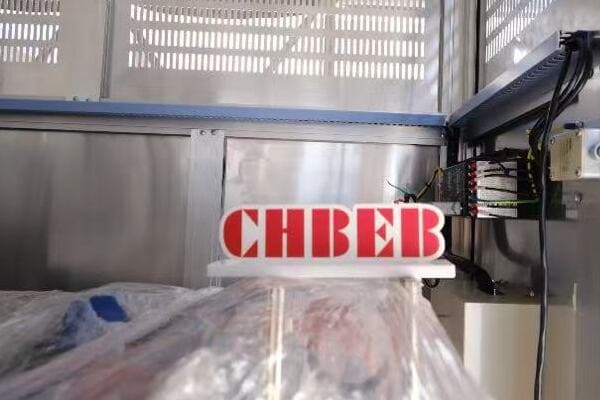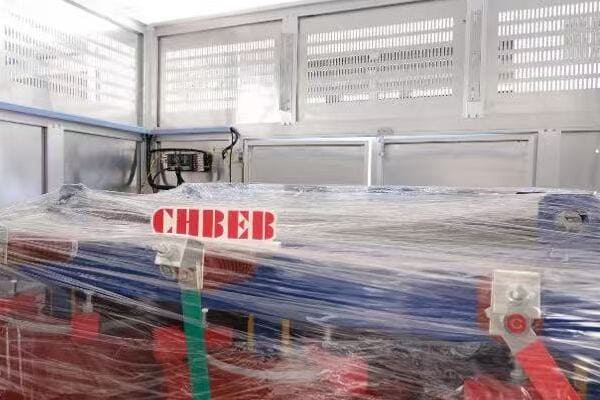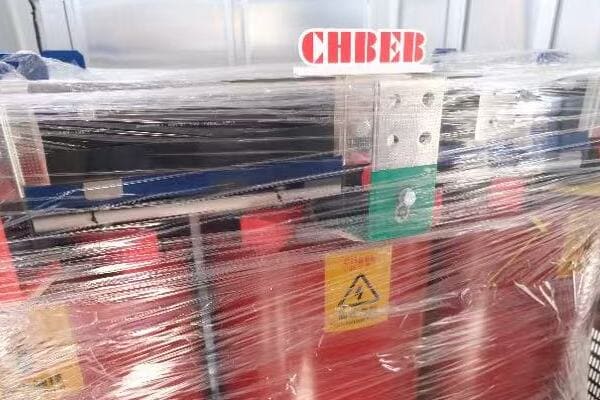Power and Distribution Transformer Explained: Key Differences in Voltage, Function, and Installation?
Are you confused about the differences between power and distribution transformers? You’re not alone. Many engineers and project managers struggle to distinguish between these two crucial components of our electrical grid. But what if you could easily understand their unique roles and make informed decisions for your power system?
Power and distribution transformers differ in voltage levels, applications, and installation methods. Power transformers operate at high voltages in transmission systems, while distribution transformers reduce voltage for local use. Understanding these differences helps engineers select the right transformer for grid design, industrial, or commercial power delivery.
In this comprehensive guide, I’ll walk you through the key differences between power and distribution transformers. Whether you’re designing a new electrical system or upgrading an existing one, this article will equip you with the knowledge to choose the right transformer for your specific needs.
What Is a Power Transformer?
Have you ever wondered how electricity from power plants reaches our cities? Power transformers play a crucial role in this process, but what exactly are they, and how do they function in our electrical grid?
A power transformer is a high-voltage, high-capacity device used in electrical transmission systems. It typically operates at voltages between 66 kV and 765 kV, handling large power capacities. Power transformers are essential in step-up applications at power plants and step-down operations at primary substations.
Understanding Power Transformers in Depth
Let’s explore the key aspects of power transformers:
- Voltage Levels and Capacity
- Applications and Locations
- Design and Cooling Systems
- Efficiency and Load Characteristics
Voltage Levels and Capacity
Power transformers operate at the highest voltage levels in our electrical systems:
- Typical voltage range: 66 kV to 765 kV
- Capacity can range from tens to hundreds of MVA
I once worked on a project involving a 500 kV power transformer for a major transmission line. The sheer size and complexity of the unit were awe-inspiring, highlighting the critical role these devices play in our power infrastructure.
Applications and Locations
Power transformers are found at key points in the electrical grid:
- Step-up transformers at power plants: Increase generator voltage for long-distance transmission
- Step-down transformers at primary substations: Reduce transmission voltages for sub-transmission or distribution networks
Design and Cooling Systems
The design of power transformers is optimized for high efficiency and reliability:
- Core: Often made of high-grade silicon steel to minimize losses
- Windings: Typically copper, designed for high current-carrying capacity
- Cooling: Usually oil-immersed with advanced cooling systems like ONAN (Oil Natural Air Natural) or OFAF (Oil Forced Air Forced)
During a recent substation upgrade, we implemented an OFAF cooling system for a large power transformer. This choice significantly improved its capacity to handle peak loads during hot summer months.
Efficiency and Load Characteristics
Power transformers are designed for high efficiency under specific conditions:
- Optimized for constant, high loads
- Efficiency typically peaks at 80-90% of rated load
- Low load operation can lead to reduced efficiency
Here’s a quick overview of power transformer characteristics:
| Characteristic | Typical Range/Type |
|---|---|
| Voltage | 66 kV – 765 kV |
| Capacity | 10 MVA – 1000 MVA |
| Efficiency | 99%+ at optimal load |
| Cooling System | ONAN, ONAF, OFAF |
| Load Profile | Constant, high load |
Understanding the characteristics of power transformers is crucial for grid planning and large-scale power distribution projects. In my experience, the selection of the right power transformer can significantly impact the overall efficiency and reliability of a transmission system. Whether you’re working on a new power plant connection or upgrading a major substation, considering these factors will help ensure your power transformer meets the demands of your high-voltage application.
What Is a Distribution Transformer?
Have you ever wondered how the high-voltage electricity in power lines is converted to the usable voltage in our homes and businesses? This is where distribution transformers come into play. But what exactly are these devices, and how do they differ from their larger counterparts?
A distribution transformer is a type of transformer used to convert medium-voltage power to lower voltages suitable for end-user consumption. Typically operating in the range of 11 kV to 33 kV on the primary side and stepping down to 400V/230V, these transformers are the final link in the electrical distribution chain before power reaches consumers.

Diving Deeper into Distribution Transformers
Let’s explore the key aspects of distribution transformers:
- Voltage Levels and Capacity
- Applications and Locations
- Design Features
- Efficiency and Load Characteristics
Voltage Levels and Capacity
Distribution transformers operate at the lower end of the voltage spectrum:
- Primary voltage typically ranges from 11 kV to 33 kV
- Secondary voltage usually 400V/230V for three-phase and single-phase supply
- Capacity generally ranges from 5 kVA to 3000 kVA
I once worked on a project to upgrade the power supply in a small town. We installed several 500 kVA distribution transformers to replace older, less efficient units. The improvement in power quality and reliability was immediately noticeable to the residents.
Applications and Locations
Distribution transformers are found in various settings:
- Pole-mounted in residential areas
- Pad-mounted in commercial and light industrial zones
- Underground in urban areas with high aesthetic requirements
Design Features
These transformers are designed for versatility and ease of maintenance:
- Often dry-type or filled with biodegradable oils for environmental safety
- Compact design to fit in space-constrained areas
- Built to withstand outdoor conditions (for pole and pad-mounted types)
During a recent project for a shopping center, we opted for a cast resin dry-type distribution transformer. This choice eliminated fire risks associated with oil-filled units and simplified the installation process in the confined electrical room.
Efficiency and Load Characteristics
Distribution transformers are optimized for variable loads:
- Designed to maintain good efficiency across a range of load conditions
- Often equipped with tap changers for voltage adjustment
- Efficiency is crucial as these units operate 24/7
Here’s a quick overview of distribution transformer characteristics:
| Characteristic | Typical Range/Type |
|---|---|
| Primary Voltage | 11 kV – 33 kV |
| Secondary Voltage | 400V/230V |
| Capacity | 5 kVA – 3000 kVA |
| Efficiency | 97-99% at varying loads |
| Cooling System | AN (Air Natural), ONAN |
| Load Profile | Fluctuating |
Understanding distribution transformers is essential for anyone involved in local power distribution or building electrical systems. In my experience, choosing the right distribution transformer can significantly impact energy efficiency and power quality for end-users. Whether you’re planning a new residential development or upgrading a commercial building’s power supply, considering these factors will help ensure your distribution transformer meets the diverse needs of modern power consumers.
Key Differences Between Power and Distribution Transformers?
Are you finding it challenging to distinguish between power and distribution transformers? You’re not alone. Many professionals in the electrical industry struggle to clearly articulate the differences between these two crucial types of transformers. But what if you had a clear, side-by-side comparison to help you understand and explain these differences?
Power and distribution transformers differ significantly in voltage ranges, load handling, efficiency profiles, and installation locations. Power transformers operate at high voltages (66 kV – 765 kV) in transmission systems, while distribution transformers work at lower voltages (11 kV – 33 kV) near end-users. Their design, cooling systems, and maintenance requirements also vary to suit their specific roles in the power grid.

Comprehensive Comparison of Power and Distribution Transformers
Let’s break down the key differences in a detailed comparison table:
| Feature | Power Transformer | Distribution Transformer |
|---|---|---|
| Voltage Range | 66 kV – 765 kV | 11 kV – 33 kV |
| Load Variation | Constant | Fluctuating |
| Efficiency | Higher at full load | Optimized for variable load |
| Location | Transmission substation | Near end-user |
| Cooling | Oil-cooled / ONAN, OFAF | Often AN / ONAN |
| Maintenance | Scheduled, complex | Minimal, simpler |
| Size and Weight | Large and heavy | Compact and lighter |
| Cost | High | Lower |
| Capacity | 10 MVA – 1000 MVA | 5 kVA – 3000 kVA |
| Core Design | Larger, more complex | Simpler, standardized |
| Winding Material | Typically copper | Copper or aluminum |
| Insulation | Oil and paper (usually) | Various (oil, dry-type, resin) |
| Monitoring | Continuous, advanced | Basic, often manual checks |
| Lifespan | 30-40 years | 20-30 years |
Voltage and Capacity Differences
The most obvious distinction lies in the voltage levels and power handling capacity:
- Power Transformers: Handle bulk power at high voltages
- Distribution Transformers: Deliver power at usable voltages to end consumers
I once worked on a project that involved both types. We used a 230 kV/66 kV power transformer at the main substation and multiple 11 kV/400V distribution transformers to supply a large industrial park. The contrast in size and complexity was striking.
Load Handling and Efficiency
The load profiles these transformers are designed for differ significantly:
- Power Transformers: Optimized for constant, high loads
- Distribution Transformers: Designed to handle fluctuating loads efficiently
During a recent grid modernization project, we had to carefully consider these load characteristics. The power transformers at the substation level were sized for the maximum expected load, while the distribution transformers in residential areas were selected to maintain efficiency across varying daily load patterns.
Cooling and Maintenance
Cooling systems and maintenance requirements reflect their different applications:
- Power Transformers: Often use sophisticated cooling systems and require regular, specialized maintenance
- Distribution Transformers: Typically have simpler cooling (often air-natural) and need less frequent maintenance
Location and Installation
The physical placement of these transformers in the power system varies:
- Power Transformers: Found in large substations, often in secure, controlled environments
- Distribution Transformers: Located closer to end-users, often in public spaces or on utility poles
In my experience, understanding these differences is crucial for proper system design and equipment selection. For instance, in a recent urban development project, we had to carefully balance the need for high power capacity with space constraints and aesthetic considerations. This led us to choose compact, pad-mounted distribution transformers for local power delivery, while relying on larger power transformers at the district substation level.
These distinctions between power and distribution transformers are not just academic; they have real-world implications for system design, energy efficiency, and project costs. Whether you’re planning a large-scale power transmission project or a local distribution network, keeping these differences in mind will help you make informed decisions and ensure your power system is optimized for its specific requirements.
How to Choose Between Power and Distribution Transformers?
Are you struggling to decide whether you need a power transformer or a distribution transformer for your project? This choice can be daunting, especially when you consider the significant differences in cost, size, and application. But what if you had a clear decision-making framework to guide your selection process?
Choosing between power and distribution transformers depends on your project’s voltage requirements, power capacity needs, and the transformer’s position in the electrical system. Power transformers are suitable for high-voltage, high-capacity applications in transmission systems, while distribution transformers are ideal for lower voltage, end-user power delivery. Consider factors like load profile, location, and future expansion plans in your decision.
Key Factors in Choosing the Right Transformer
Let’s explore the critical considerations for selecting between power and distribution transformers:
- Voltage Requirements
- Power Capacity Needs
- System Position
- Load Profile
- Location and Environment
- Future Expansion Plans
Voltage Requirements
The primary factor in your decision should be the voltage levels you’re working with:
- Power Transformers: Choose for voltages 66 kV and above
- Distribution Transformers: Suitable for voltages up to 33 kV
I once consulted on a project where the client initially requested a power transformer for a 33 kV application. After analyzing their needs, we determined that a robust distribution transformer was more appropriate and cost-effective for their voltage level.
Power Capacity Needs
Consider the amount of power you need to transform:
- Power Transformers: Typically for capacities above 10 MVA
- Distribution Transformers: Generally up to 3000 kVA
System Position
Where in the electrical system will the transformer be placed?
- Power Transformers: Used in transmission systems and primary substations
- Distribution Transformers: Employed in the final step of power delivery to consumers
During a recent grid upgrade project, we used this criterion to clearly delineate where power transformers ended and distribution transformers began in the system layout.
Load Profile
The expected load characteristics should influence your choice:
- Power Transformers: Ideal for constant, high loads
- Distribution Transformers: Better suited for fluctuating loads
Location and Environment
Consider the installation site and environmental factors:
- Power Transformers: Often in dedicated substations with controlled environments
- Distribution Transformers: Can be pole-mounted, pad-mounted, or installed in varied locations
In an urban renewal project, we opted for compact, low-noise distribution transformers to fit within the aesthetic and space constraints of a densely populated area.
Future Expansion Plans
Think about potential future needs:
- Power Transformers: Choose if you anticipate significant load growth or voltage upgrades
- Distribution Transformers: More easily replaceable as needs change
Here’s a decision matrix to help guide your choice:
| Factor | Choose Power Transformer If | Choose Distribution Transformer If |
|---|---|---|
| Voltage | ≥ 66 kV | < 33 kV |
| Capacity | > 10 MVA | ≤ 3000 kVA |
| System Position | Transmission/Primary Substation | Local Distribution |
| Load Profile | Constant, High Load | Fluctuating Load |
| Location | Dedicated Substation | Various (Pole, Pad, Building) |
| Future Plans | Major Expansion Expected | Gradual Growth or Stable Needs |
Remember, these guidelines are not absolute. In my experience, there can be overlap and exceptions based on specific project requirements. For instance, in a large industrial facility, we once used a power transformer-grade unit for what would typically be a distribution application due to unique power quality and reliability needs.
The key to making the right choice is to thoroughly analyze your current needs, consider future scenarios, and consult with experts if you’re unsure. By carefully weighing these factors, you can ensure that you select the transformer type that best fits your project’s requirements, balancing performance, cost, and long-term flexibility.
Common Installation Scenarios and Tips?
Are you feeling uncertain about how to properly install power or distribution transformers in various scenarios? You’re not alone. Many engineers and project managers find the installation process challenging, especially when dealing with different environments and requirements. But what if you had a guide to common installation scenarios and expert tips to ensure a smooth and safe setup?
Transformer installation varies significantly between power and distribution types. Power transformers often require large, secure substations with specialized foundations and cooling systems. Distribution transformers can be pole-mounted, pad-mounted, or installed in buildings, each with unique considerations for accessibility, safety, and environmental protection. Proper installation is crucial for performance, safety, and longevity.
Key Installation Scenarios and Best Practices
Let’s explore common installation scenarios and tips for both power and distribution transformers:
- Power Transformer Substation Installation
- Pole-Mounted Distribution Transformer
- Pad-Mounted Distribution Transformer
- Indoor Distribution Transformer Installation
- General Installation Tips
Power Transformer Substation Installation
Installing a power transformer in a substation requires careful planning:
- Foundation: Must be robust enough to support the transformer’s weight
- Oil Containment: Requires a pit or bund to contain potential oil leaks
- Cooling Systems: Ensure adequate space for radiators or fans
- Safety Clearances: Maintain proper distances from other equipment and structures
I once oversaw the installation of a230 kV power transformer in a new substation. The foundation alone took weeks to prepare, requiring specialized concrete and reinforcement to support the 150-ton unit. We had to carefully coordinate the delivery and installation with a 500-ton crane, highlighting the complexity of power transformer installations.
Pole-Mounted Distribution Transformer
Pole-mounted transformers are common in rural and suburban areas:
- Pole Strength: Ensure the pole can support the transformer’s weight
- Mounting Height: Install at a safe height to prevent unauthorized access
- Wildlife Protection: Use guards to prevent animal-caused outages
- Accessibility: Consider maintenance access for bucket trucks
During a rural electrification project, we faced challenges with wildlife interfering with pole-mounted transformers. We implemented innovative wildlife guards, which significantly reduced outages and improved system reliability.
Pad-Mounted Distribution Transformer
Pad-mounted transformers are popular in urban and commercial settings:
- Foundation Pad: Must be level and able to support the transformer’s weight
- Flood Considerations: Install above potential flood levels
- Ventilation: Ensure adequate airflow around the unit
- Security: Implement tamper-resistant enclosures and locks
I recently worked on a shopping center development where we installed several pad-mounted transformers. We had to carefully plan their locations to balance accessibility for maintenance with aesthetics and pedestrian safety.
Indoor Distribution Transformer Installation
Installing transformers indoors presents unique challenges:
- Ventilation: Ensure proper air circulation to prevent overheating
- Fire Safety: Use dry-type transformers or implement strict fire protection measures for oil-filled units
- Noise Considerations: Install sound-dampening materials if necessary
- Access: Plan for equipment replacement and maintenance
In a hospital renovation project, we installed cast resin dry-type transformers in the basement. The challenge was managing ventilation and noise levels while ensuring easy access for future maintenance.
General Installation Tips
Regardless of the scenario, keep these tips in mind:
- Follow manufacturer guidelines and local regulations
- Ensure proper grounding and bonding
- Use appropriate personal protective equipment (PPE)
- Conduct thorough pre-energization checks
- Document the installation process for future reference
Here’s a quick reference table for installation considerations:
| Scenario | Key Considerations | Common Challenges |
|---|---|---|
| Substation | Foundation, oil containment, cooling | Space constraints, environmental impact |
| Pole-Mounted | Pole strength, accessibility | Wildlife interference, storm resilience |
| Pad-Mounted | Flooding, security, aesthetics | Vandalism, heat dissipation |
| Indoor | Ventilation, fire safety, noise | Space limitations, weight restrictions |
In my experience, successful transformer installations require careful planning and attention to detail. I recall a project where we had to retrofit a distribution transformer into an old building. The space constraints and the need to maintain the building’s historical facade presented unique challenges. We ended up designing a custom compact substation that fit within the existing structure while meeting all safety and performance requirements.
Remember, proper installation is not just about following a checklist; it’s about understanding the specific needs of your site and the transformer you’re installing. Always consult with experts and local authorities if you’re unsure about any aspect of the installation process. A well-installed transformer will operate efficiently, safely, and reliably for decades, making the extra effort in the installation phase well worth it.
Summary: Which One Fits Your Power System?
Are you still unsure whether a power transformer or a distribution transformer is the right choice for your power system? This final decision can be daunting, especially when considering the long-term implications for your project. But what if you had a clear, concise guide to help you make this crucial choice?
Choosing between power and distribution transformers depends on your system’s voltage level, capacity requirements, and position in the power grid. Power transformers are ideal for high-voltage (≥66 kV), high-capacity (>10 MVA) applications in transmission systems. Distribution transformers suit lower voltage (<33 kV), lower capacity (≤3000 kVA) needs closer to end-users. Consider load profile, location, and future expansion plans in your decision.
Final Decision-Making Guide
Let’s summarize the key factors to consider when choosing between power and distribution transformers:
- Voltage Level
- Capacity Requirements
- System Position
- Load Profile
- Installation Environment
- Future Expansion
Quick Reference Table
Use this table as a quick guide for your decision:
| Factor | Power Transformer | Distribution Transformer |
|---|---|---|
| Voltage | ≥66 kV | <33 kV |
| Capacity | >10 MVA | ≤3000 kVA |
| System Position | Transmission, Primary Substations | Local Distribution |
| Load Profile | Constant, High Load | Fluctuating Load |
| Installation | Large Substations | Pole, Pad, or Building |
| Typical Applications | Power Plants, Grid Interconnections | Residential, Commercial, Light Industrial |
Scenario-Based Recommendations
-
Large Industrial Facility:
- If connected directly to high-voltage grid: Power Transformer
- If supplied by medium-voltage line: Large Distribution Transformer
-
Residential Development:
- Typically requires Distribution Transformers
- Consider pad-mounted or pole-mounted based on aesthetics and space
-
Renewable Energy Plant:
- Solar Farm: Often requires Power Transformer for grid connection
- Small Wind Farm: May use large Distribution Transformer
-
Commercial Building:
- Usually served by Distribution Transformer
- Consider dry-type for indoor installation
-
Data Center:
- May require Power Transformer if directly connected to high-voltage grid
- Multiple Distribution Transformers for redundancy and load management
In my career, I’ve encountered numerous situations where the choice between power and distribution transformers wasn’t immediately clear. For instance, in a recent project for a large manufacturing plant, we initially considered a power transformer due to the high energy demands. However, after analyzing the local grid infrastructure and future expansion plans, we opted for multiple large distribution transformers. This decision provided greater flexibility and redundancy while still meeting the plant’s substantial power needs.
Remember, the right choice depends on your specific circumstances. Don’t hesitate to consult with experts or reach out to transformer manufacturers for guidance. The goal is to select a transformer that not only meets your current needs but also provides the flexibility to adapt to future changes in your power system.
By carefully considering these factors and understanding the strengths of each transformer type, you can make an informed decision that ensures efficient, reliable, and cost-effective power distribution for your project.
Conclusion
Choosing between power and distribution transformers requires understanding their distinct roles, voltage levels, and applications in the electrical system. Power transformers excel in high-voltage, high-capacity scenarios, while distribution transformers are ideal for local, lower-voltage power delivery. Consider your specific needs, future plans, and installation environment to make the best choice for your power system.
Free CHBEB Transformer Catalog Download
Get the full range of CHBEB transformers in one catalog.
Includes oil-immersed, dry-type, pad-mounted, and custom solutions.
Quick Message
Request A free quote
We'd like to work with you
- +86 15558785111
- [email protected]
- +86 15558785111
What We Do
CHINA BEI ER BIAN (CHBEB) GROUP, with 218 million in registered capital, originated from Beijing Beierbian Transformer Group. Headquartered in Beijing for R&D, it operates major production bases in Nanjing and Yueqing, producing high-quality products.
Latest Product
address
BeiJing
No 3,RongJing East Road,BeiJing Economic Technological Development Area,BeiJing,China
JiangSu
No 7️Xiangfeng Road,Jiangning,NanJing,JiangSu,China
WenZhou
No.211, Wei 16 Road, Industrial Zone, Yueqing, Wenzhou, Zhejiang, China.
XiangYang Industrial Zone ,YueQing,WenZhou,ZheJiang,China
contact us
- [email protected]
- +86 13057780111
- +86 13057780111
- +86 15558785111
Copyright © Bei Er Bian Group







